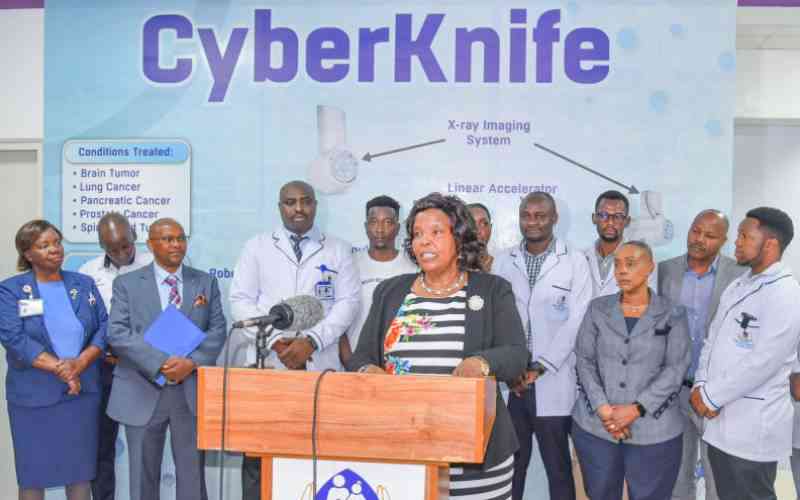×
The Standard e-Paper
Truth Without Fear

When the Kenyatta University Teaching, Referral and Research Hospital (KUTRRH) launched the CyberKnife System last May, the institution claimed to have made history by acquiring the device, which they said was the first and only fully robotic radiotherapy device for cancer treatment.
On Wednesday, the institution announced that it had made another medical milestone after treating its first patient for CyberKnife surgery.

